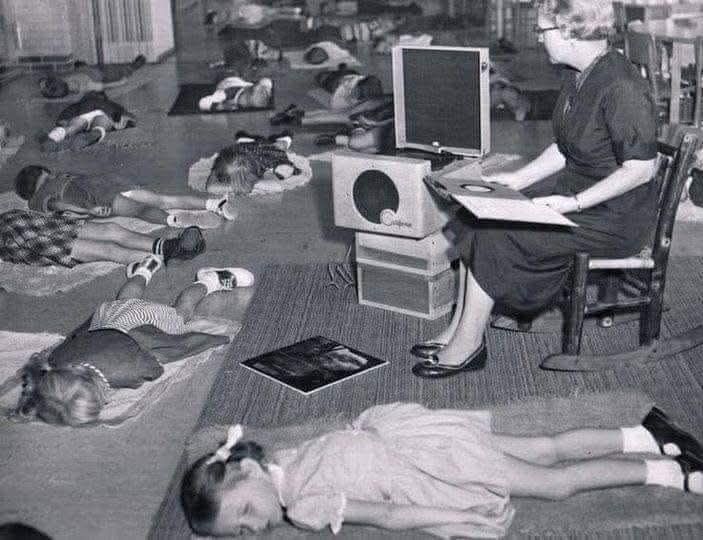Nap Time in Kindergarten in the 1950s
The Importance of Nap Time
In the 1950s, nap time was a crucial part of the kindergarten experience. Educational philosophies of the time emphasized the importance of rest for young children to support their growth and development. A typical kindergarten schedule included a dedicated nap time, usually after lunch, when children would lie down on mats or cots brought from home or provided by the school.
Setting the Scene
Classrooms were often arranged with mats or small cots spaced evenly apart, ensuring each child had a comfortable and personal space to rest. Teachers would dim the lights and create a calm, quiet environment conducive to relaxation and sleep. The atmosphere was one of tranquility, designed to help children recharge for the remainder of the school day.
Music for Nap Time
Music played a significant role in setting the tone for nap time. In the 1950s, the selections often included soft, soothing melodies to help children drift off to sleep. Here are some types of music and specific examples that might have been played during nap time:
1. **Classical Music:** Pieces like Claude Debussy’s “Clair de Lune” or Ludwig van Beethoven’s “Moonlight Sonata” were popular choices. The gentle and flowing melodies of these compositions created a peaceful ambiance.
2. **Lullabies:** Traditional lullabies such as “Brahms’ Lullaby” or “Hush, Little Baby” were common. These songs had been used for generations to soothe children to sleep and were a staple in many households and classrooms.
3. **Nature Sounds:** Some teachers might have used recordings of nature sounds, like the gentle flow of a stream or the soft rustling of leaves. These sounds were believed to have a calming effect, helping children relax and feel at ease.
4. **Popular Music:** Occasionally, more contemporary tunes from the 1950s that had a soothing quality might be used. Songs like Nat King Cole’s “Mona Lisa” or Bing Crosby’s “Too-Ra-Loo-Ra-Loo-Ral (That’s an Irish Lullaby)” provided a comforting and familiar backdrop for nap time.
The Experience
For many children, nap time was a cherished part of their day. It offered a moment of respite and a break from the structured activities and learning. Teachers played a crucial role in ensuring that this time was both restful and beneficial. They often walked softly around the room, gently patting a back or offering a comforting word to any child struggling to settle down.
In summary, nap time in the 1950s was more than just a break; it was an essential component of early childhood education. The careful selection of music and the nurturing environment created by teachers contributed to a restful and rejuvenating experience for young children, laying the foundation for a productive and enjoyable school day.
